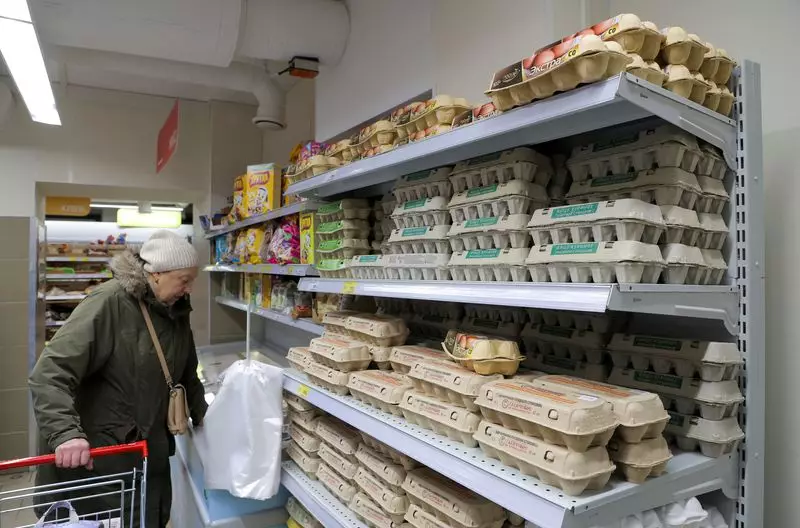Recent reports indicate that Russia has experienced a significant inflation rate of 9.5% for the year, as revealed by Rosstat’s data leading up to December 23. This figure marks a troubling trend for the Russian economy, especially when considering the central bank’s prior efforts to control inflationary pressures through strategic interest rate adjustments. With consumer prices climbing by 0.33% in just one week, it underscores the volatility and unpredictability of current economic conditions.
In a move that took many analysts by surprise, the Central Bank of Russia decided to maintain its key interest rate at an elevated 21%. This decision comes amid ongoing inflationary pressures and an apparent struggle to bring the consumer price index down to its targeted level of 4%. The bank believes that previous tightening measures have fostered an environment that should ultimately aid in reducing inflation. However, this optimism now faces significant challenges, as the economic landscape continues to evolve rapidly.
The inflationary spike can be attributed, in part, to seasonal fluctuations in food prices. Notably, prices for fruits and vegetables have seen considerable increases, with cucumbers rising by 8.3% and tomatoes by 1.9% in just a week. Such dramatic shifts are indicative of the broader supply chain issues and market dynamics at play. Additionally, other staple items are feeling the pinch as well, with eggs and frozen fish increasing by 1.7% and 1.4%, respectively. This raises pressing questions about the cost of living for average Russian households, which are already contending with the pressures of rising inflation.
Looking ahead, inflationary expectations among households have escalated, with a notable rise to 13.9% in December—marking the highest sentiment reported this year. Such increased expectations can have a self-fulfilling effect, whereby consumers adjust their purchasing behaviors based on anticipated future price hikes, further driving inflation. The focus on rising prices of essential goods and consumer electronics reveals a growing concern among the populace, suggesting that economic distress is palpable at the consumer level.
The current situation in Russia presents a complex tapestry of challenges and uncertainties. While the central bank aims to rein in inflation through its interest rate strategy, the recent spike in prices illustrates the difficulties faced in achieving price stability. The interplay of seasonal price changes, consumer sentiment, and interest rate policies will be crucial in shaping the economic landscape in the coming months. As households brace for potential financial strain, both consumers and policymakers must navigate an increasingly volatile economic environment. The real test will be whether proactive measures can be taken to restore confidence and stabilize prices before inflation further entrenches itself in the Russian economy.

